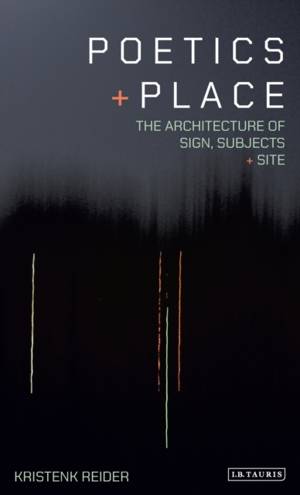
- Retrait gratuit dans votre magasin Club
- 7.000.000 titres dans notre catalogue
- Payer en toute sécurité
- Toujours un magasin près de chez vous
- Retrait gratuit dans votre magasin Club
- 7.000.0000 titres dans notre catalogue
- Payer en toute sécurité
- Toujours un magasin près de chez vous
Description
How do artworks 'speak', and how do we 'listen'
and respond? These questions underlie the
investigation here of Roni Horn's Pair Object
III: For Two Rooms, Emily Dickinson's later
manuscripts, Theresa Hak Kyung Cha's Passages
Paysages, Fiona Templeton's Cells of Release and
Jenny Holzer's Lustmord. The tenets of critical
performance, art-writing and site-writing
inform the critical method used in Poetics
and Place. Each chapter is dedicated to one of
these five artworks, and is arranged in order
to fulfil three main objectives: to understand
how the artworks generate meaning through a
material poetics in relation to place; to develop
a critical methodology for engaging with them;
and to investigate their ethical potential and
political imperative. All of this, ultimately,
facilitates the development of a triadic relation
between theoretical concepts of sign, subject
and site at the crossover between poetry,
art and spatial practices. This extends each
artwork beyond the dyad of a critical encounter
in order to offer - and allow others to grasp
- an appreciation of how the artwork figures
meaningfully, as well as configures meaning,
in the wider world of objects and things. The
book concludes with a discussion of the ethics
of reading from the second person, opening up
a debate concerning the role of empathy within
contemporary, politically engaged practices in
art and poetry.
and respond? These questions underlie the
investigation here of Roni Horn's Pair Object
III: For Two Rooms, Emily Dickinson's later
manuscripts, Theresa Hak Kyung Cha's Passages
Paysages, Fiona Templeton's Cells of Release and
Jenny Holzer's Lustmord. The tenets of critical
performance, art-writing and site-writing
inform the critical method used in Poetics
and Place. Each chapter is dedicated to one of
these five artworks, and is arranged in order
to fulfil three main objectives: to understand
how the artworks generate meaning through a
material poetics in relation to place; to develop
a critical methodology for engaging with them;
and to investigate their ethical potential and
political imperative. All of this, ultimately,
facilitates the development of a triadic relation
between theoretical concepts of sign, subject
and site at the crossover between poetry,
art and spatial practices. This extends each
artwork beyond the dyad of a critical encounter
in order to offer - and allow others to grasp
- an appreciation of how the artwork figures
meaningfully, as well as configures meaning,
in the wider world of objects and things. The
book concludes with a discussion of the ethics
of reading from the second person, opening up
a debate concerning the role of empathy within
contemporary, politically engaged practices in
art and poetry.
Spécifications
Parties prenantes
- Auteur(s) :
- Editeur:
Contenu
- Nombre de pages :
- 256
- Langue:
- Anglais
- Collection :
- Tome:
- n° 34
Caractéristiques
- EAN:
- 9781780763378
- Date de parution :
- 19-12-13
- Format:
- Livre relié
- Format numérique:
- Genaaid
- Dimensions :
- 142 mm x 216 mm
- Poids :
- 430 g

Les avis
Nous publions uniquement les avis qui respectent les conditions requises. Consultez nos conditions pour les avis.






